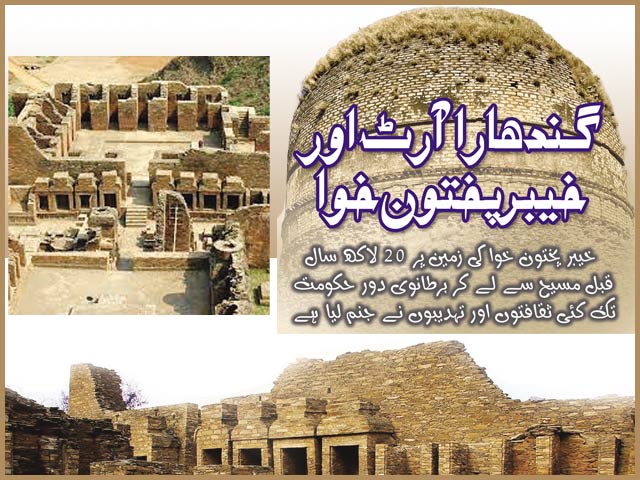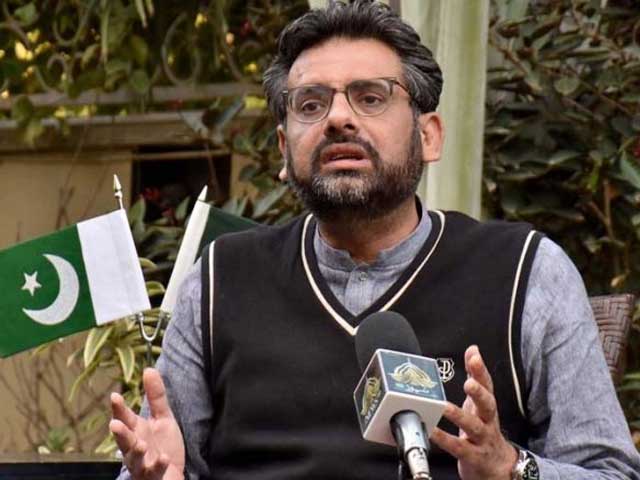According to archaeologists, in the light of the history written about Gandhara art and Khyber Pakhtunkhwa and numerous ancient artifacts recovered from different areas, the land of Khyber Pakhtunkhwa was ruled by the British from 2 million years before Christ. Cultures and civilizations of many nations have been born.
The most famous of which is the Gandhari nation and its civilization and culture, the numerous specimens of which are still present in the country, especially in the museum of Peshawar. Gandhara is the ancient name of the Peshawar Valley, whose civilization extended from Peshawar west of the Indus River and north of the Kabul River to Swat, Dir and Bamiyan (Afghanistan).
Later the area of Taxila was also affected by it. The Gandhara Valley and the Achaemenid Empire are also mentioned in the sacred book of Aryas “Rigveda” and the inscriptions of Darius I written in the 6th century BC. Pushkalavati (literally Charsada) was the first capital of Gandhara from the 6th century BC to the 1st century BC when it was invaded by Alexander the Great in 327 BC.
Achaemenids, Mauryas, Greeks, Kushans and Sasanians also ruled Gandhara. The Kushan dynasty made Peshawar or Parshapura its capital in the first century AD. Later, the royal family made Hind, located on the right bank of the Indus between Tarbela Dam and Attock in Swabi district, as their capital. In 998 AD, the Ghaznavid dynasty conquered Hind and ended the Gandhara civilization.
The Gandhara art that emerged in the 1st century AD was local, influenced to some extent by Greek and Roman art. This art flourished from the 1st to the 5th century AD and died out around the 8th century AD. The purpose of this art was to propagate Buddhism in the region and for this purpose, numerous sculptures of stone, lime, clay and bronze were made and placed in places of worship (stupas) and monasteries.
The Chinese pilgrim and traveler Hiu Tsang in his travelogue in the early 7th century mentions thousands of such temples and monasteries, of which only a few have been excavated.
Gandhara art includes individual statues of Gautama Buddha, complete biographies and inscribed stories about previous births. Artists used indigenous and Greek arts for Gautama Buddha statues and gave eternal life to the Buddha statue.
The biographical treatises of Gautama Buddha during the reign of King Kanishka are the main documents of a branch of Buddhism known as “Mahayana”. Buddhism spread to China, Korea, and Japan along the Silk Road through pilgrims, tourists, and traders. Stone and limestone statues and plaques are decorated in stupas and monasteries in such a way that details of Buddhism and various aspects of Buddha’s life become clear to the viewer.
The remains of Gautama Buddha were also kept in caskets in stupas for worship. This art, brought up under the shadow of the Kushans, is much more expressive than the contemporary Mathura art. Gandhara art flourished with the rise of Buddhism and its rise coincided with the rise of Buddhism. Ashoka was the first king who not only embraced Buddhism but became its propagator and devoted the energies of his empire to its spread.
After Ashoka, the second great king who followed in the footsteps of Ashoka and worked for the promotion of Buddhism was Maharaja Kanishka. In 135 BC, five tribes of Central Asia were united in a loose alliance, including the Greeks of Bactria.
Kushan leadership conquered Afghan territory. The peak of this dynasty was seen in 2nd AD. This was the reign of Maharaja Kanishka (78 AD to 144 AD). Kanishka greatly expanded the boundaries of his empire with his ability. His empire extended from Mathura in north-central India to the borders of China beyond Bactria. Kanishka was a patron of religion and art, the king connected China, India and Rome along the Silk Road.
All the time, the trade caravans were active in carrying their ideas and goods from one place to another, they had to pass through Afghanistan, where Balkh was a big trading center where these caravans exchanged their goods and trade. Indian tourists and migrants would travel to China through the Silk Road and introduce Buddhism to the Chinese people. Along with Buddhism, Gandhara art was also introduced.
The largest Buddha statues in the world, measuring 175 feet and 120 feet high, were carved out of rock on the hill of Bamiyan, in central Afghanistan. The summer residences of the Kushan emperors were at Bagram, north of Kabul, and there have been abundant supplies of goods from Alexandria, Rome, India, and China, which means that the goods of all these countries at this time were largely transported by the same route. Moved to another.
The sites of Dilbarjan in the north of Balkh and Shabarghan in the west of Balkh have also found gold coins used as foreign exchange at that time which were used in the mentioned countries. Buddhist art flourished in the areas of present-day northwestern Pakistan and eastern Afghanistan. Greek and Roman influences are prominent in this art. This was the Kushan art and along with these areas Mathura region of Uttar Pradesh also had its centers.
In Gandhara art, there are clear influences of classical Roman art, similarly the face, nose, eyes, etc. of the Buddha are similar to those of the Greeks. The spices used in sculpture and the layer of polish applied to the statue were also given by the Greeks. Maharaja Kanishka was a pacifist king, he wanted to see his people happy and peaceful and live in peace with the neighboring countries, thus the cultures of the countries were sharing with each other.
Gandhara art was flourishing in his era. Greek, Roman and Iranian art were harmonizing with Gandhara art, something that happened earlier in the Ashoka period as well. This art was raised in the shadow of religion, with much of the work being done on statues of the Buddha or images carved in stone. Along with the memorial statues of the Buddha, the Buddhist stupas also marked the evolution in architecture.
The stupa of Gandhara art was built higher, the square railing on the top was also becoming more. The main thing that distinguishes the Gandhara stupa from the earlier stupas is the large umbrella made on the top. This is undoubtedly architecture. is a masterpiece and its strength and durability are even more surprising. Among all the Gandhara stupas, the largest stupa was built by Kanshak at what is today known as Shahji’s Dheri in the outskirts of Peshawar.
Kanishka’s capital is also said to have been located here, along with this large stupa there were several other relatively smaller stupas. Today only their ruins can be found. The sculpture of Gandhara art is different from the sculpture of the Maurya dynasty in that it has clear foreign influences and it is clear that there has been a fusion of different cultures. The decline of the Kushan dynasty began with the Sassanid invasions, along with the “Whites” of Central Asia.
Now the Gandhara art began to shrink in Kashmir and Afghanistan, but in the lush valley between Taxila and Bactria, the Buddhist Peshwas continued to do their work. They built their abodes on the rocks of Mount Hindu Kush and continued to work on Buddha statues. Buddha statues were clothed and garlands and ornaments were also worn. Afghanistan was a great repository of Buddhist past in all ages.
Bamiyan itself had the largest statues of Gautama Buddha. The fanatical kings of the Mongols and Mughals considered it their duty to destroy the idols and many monuments were destroyed. Kanishka carved images of the kings of the Kushan dynasty on a hill, which were destroyed by the surrounding villagers. Stones will be cut. There is much more that has survived the ravages of time, much has been destroyed but not everything has been destroyed, according to the poet.
Some traces of your memory still remain
A heart without service is not deserted
Exemplary masterpieces of Gandhara art are still buried in many areas of Khyber Pakhtunkhwa. Especially Mardan district, Swat apart from the famous historical village of Lahore in Swabi district which is now a tehsil of Swabi district and where the first grammarian of Sanskrit language “Panini” was also born.
A place named after him “Pane Wind” and Buddhist name “Buddhwand” still exist here. Many elderly elders of this village believe that if the excavation work is started in Pane Wind and Badhu Wind, not only Buddhism but also numerous rare examples of Gandhara art can be found. In the same way, “Solai Dheri”, “Maladar”, “Bhago” are also located in the villages “Mankai”, “Jalbai” and “Jalsai” at a distance of two to four kilometers from Lahore. Meralu’ and ‘Rata Pind Dheri’ are places where one can discover rare artifacts of Gandhara civilization apart from ancient historical monuments. If one wishes to see the masterpieces of Gandhara art, then even today in the Peshawar museum numerous rare and rare examples of this civilization are inviting.
Peshawar Museum was established by the British Government in 1906 in Victoria Memorial Hall, its first curator was Earl Stein. The museum building is located near Governor House between Peshawar city and Sadar Railway Station. The building consisted of a large hall and side corridors to which two-storey galleries were added in 1975-74 and 1978-79.
In Peshawar Museum, the artefacts of Gandhara civilization and culture, antiquities of ancient tribal culture, coins and Islamic civilization are prominent in which the number of Gandhara artefacts is the highest. Most of the antiquities of Gandhara have been obtained from the archeological sites of Takht Bahahi and Sehri Bahlul, located 54 kilometers from Peshawar.
The collection of tribal culture includes, among other objects, wooden sculptures of the ‘Kailash’ civilization of the Chitral valley, the Islamic gallery houses photographs, manuscripts of calligraphy and tools and weapons of the period. Belongs to seeing.
(function(d, s, id){
var js, fjs = d.getElementsByTagName(s)[0];
if (d.getElementById(id)) {return;}
js = d.createElement(s); js.id = id;
js.src = “//connect.facebook.net/en_US/sdk.js#xfbml=1&version=v2.3&appId=770767426360150”;
fjs.parentNode.insertBefore(js, fjs);
}(document, ‘script’, ‘facebook-jssdk’));
(function(d, s, id) {
var js, fjs = d.getElementsByTagName(s)[0];
if (d.getElementById(id)) return;
js = d.createElement(s); js.id = id;
js.src = “//connect.facebook.net/en_GB/sdk.js#xfbml=1&version=v2.7”;
fjs.parentNode.insertBefore(js, fjs);
}(document, ‘script’, ‘facebook-jssdk’));



